In 2014, Félix Bergés explained the visual effects created by El Ranchito on The Homesman. He went on to work on various projects including A Monster Calls, Game of Thrones and The Vault. Now he’s back to talk to us about Society of the Snow, his third collaboration with director J.A. Bayona.
Laura Pedro began her career ten years ago. She joined El Ranchito in 2014 and has worked many shows such as Game of Thrones, Valley of the Dead, ¡García! and La Unidad.
What was your feeling about working again with Director J.A. Bayona?
Laura Pedro // My first project with Jota and Felix was almost ten years ago, and being able to work together again has been very enriching for me. Spending these years by his side and working hand in hand again has been an incredible adventure, being able to grow again and continue learning.
Félix Bergés // It is my third project with JA, we started ten years ago with The Impossible which was an incredible adventure. Working with JA is always an enriching experience and represents an important challenge.
What was his approach and expectations about the visual effects?
From the beginning of production, when we held the first meetings in 2018, we were always clear that what mattered most to us was realism when it came to telling the story and from that place we began to approach the VFX to accompany the film. That was why we started looking for places all over the world that would allow us to film, always knowing that at some point we were going to have to travel to the Valley of Tears to be able to capture the real mountains and always work with real images and not generated by computer.
How did you organize the work of your VFX Producer?
We knew that the amount of material that was going to be filmed would be gigantic, it was always essential for us to have a good organization of all the material. That is why at the beginning of each day of filming we were in contact both in terms of budget, time, organization, and volume of work.
How did you choose and split the work amongst the vendors?
The choice of vendors was based on the volume of work. They are companies that we have already worked with. We knew perfectly well that the organization, coordination, and final result, between them and us was going to work. The distribution of sequences was done during the editing process, seeing the needs of each sequence and distributing accordingly. If a vendor had a sequence, he was the one in charge of designing and finalizing it, in order to have consistency in the result and that it was optimal. We were able to have that consistency among the five vendors (El Ranchito, Glassworks, Lamppost, Twin Pines and Miopia) thanks to the previous work we did to organize all the backgrounds for each sequence. This consistency in the backgrounds was possible thanks to the application developed by the El Ranchito team, an application in Unreal that allowed us to compare in real time what we had shot in Sierra Nevada with what should be seen in Andes, so that each vendor can work on their own without the need to be constantly rechecking and thus they too can work more freely.
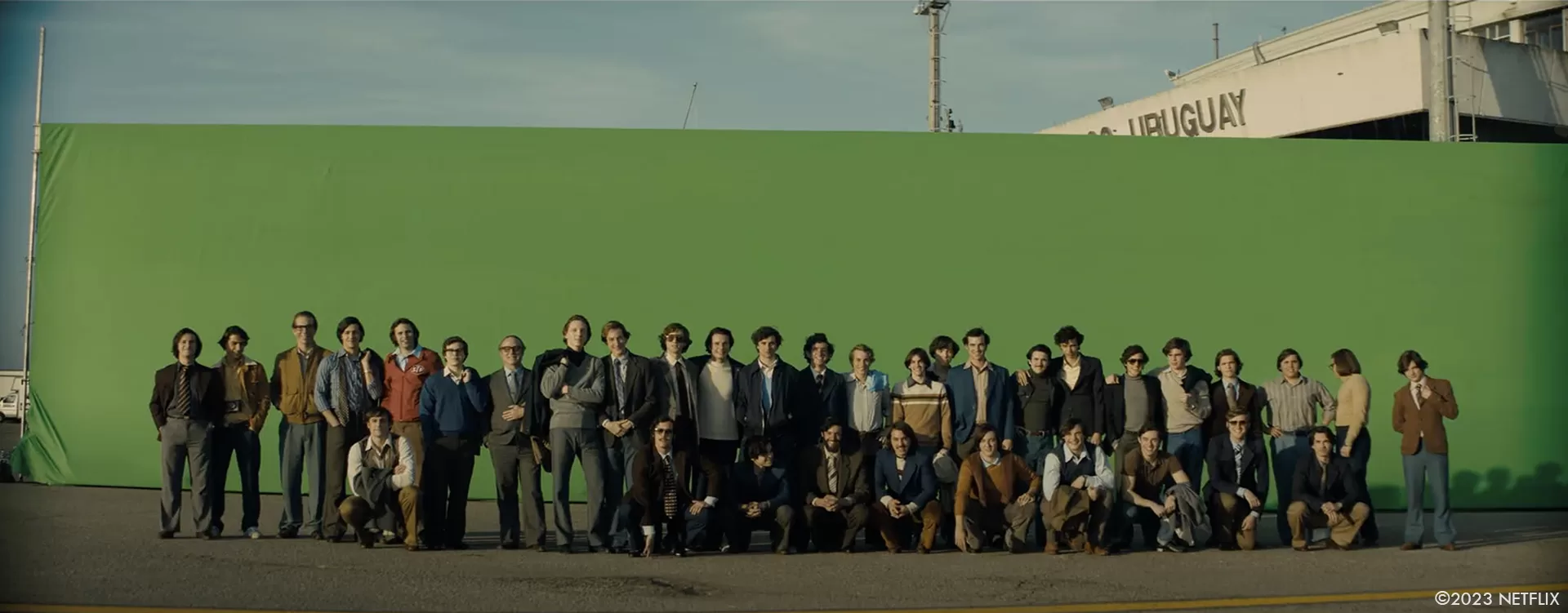
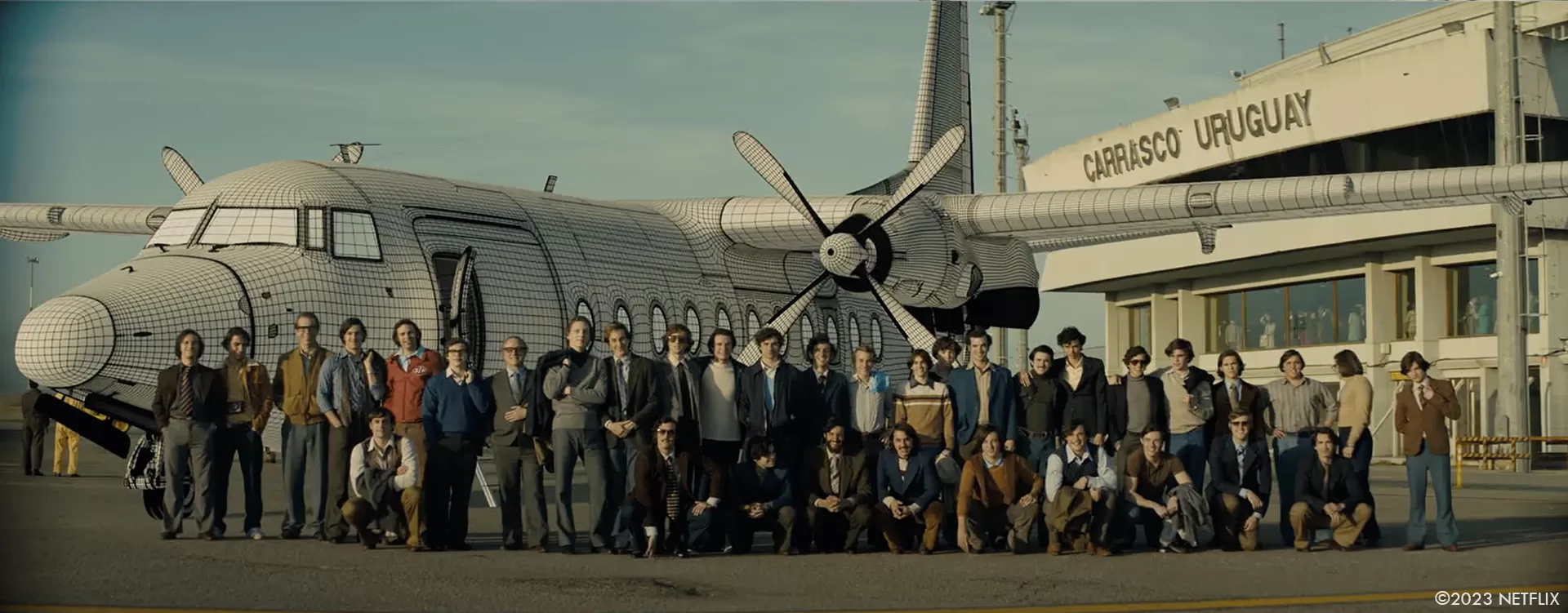
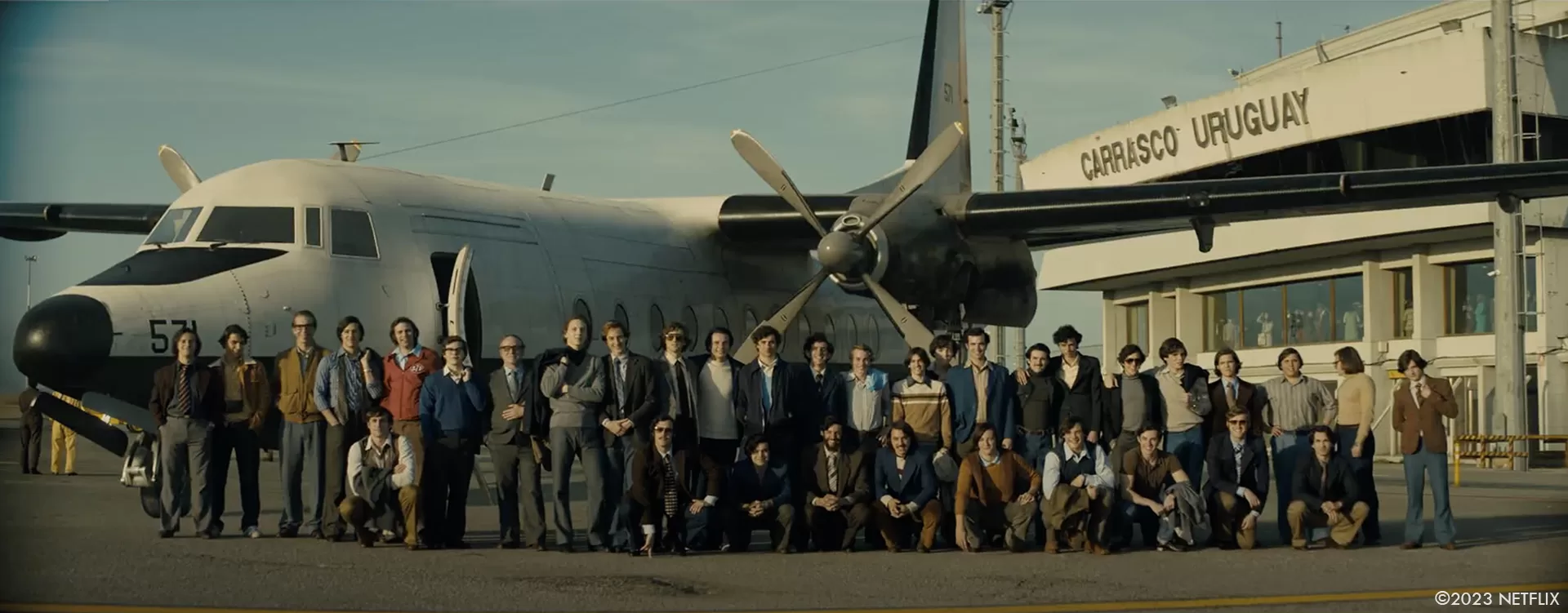
Where were the various sequences of the movie filmed?
Most of the film was shot in the Sierra Nevada (Spain). We shot there for four months out of the almost five months that the shoot lasted. The filming in Sierra Nevada was divided into three sets:
1.- A first set located at 3,000m of altitude in the « Laguna de las Yeguas » we chose this mountain because of its geography that is in many points similar to « The Valley of Tears » and because of the light conditions that occur, it is one of the ski slopes closest to the equator. On that set in the middle of the mountains is where we filmed the vast majority of days, as long as the weather conditions were not adverse there we were filming in the middle of the snow.
2.- The second set was built in an ephemeral warehouse also in Sierra Nevada. We designed this set thinking about the number of scenes that happened inside the fuselage (aircraft) itself in low light hours, dawn/dusk/night, moments of light in which filming at 3,000m was dangerous. For this set we decided to use an « L » shaped LED screen system that covered all the angles at which we were going to film. The material we projected on the screens was the mountains of the Andes that we went to photograph months before we started shooting, so we wouldn’t need to post-produce everything we filmed on this set.
3.- The third set was about 1,000m in Huéjar Sierra, it was a construction of approximately 100x100m that reproduced the same floor as the set of Sierra Nevada at 3,000m, with a fuselage as well, but in this set we had a system under the same fuselage that allowed us to hide it under the ground for all the scenes that happen after the airstrip, This allowed us to shoot exterior shots with the fuselage in the same state as on the mountain and with the fuselage buried by snow, which we couldn’t do on the mountain.
Another important part of the filming that has our intervention is the accident, which we filmed in two weeks on the Netflix sets in Tres Cantos, Madrid.
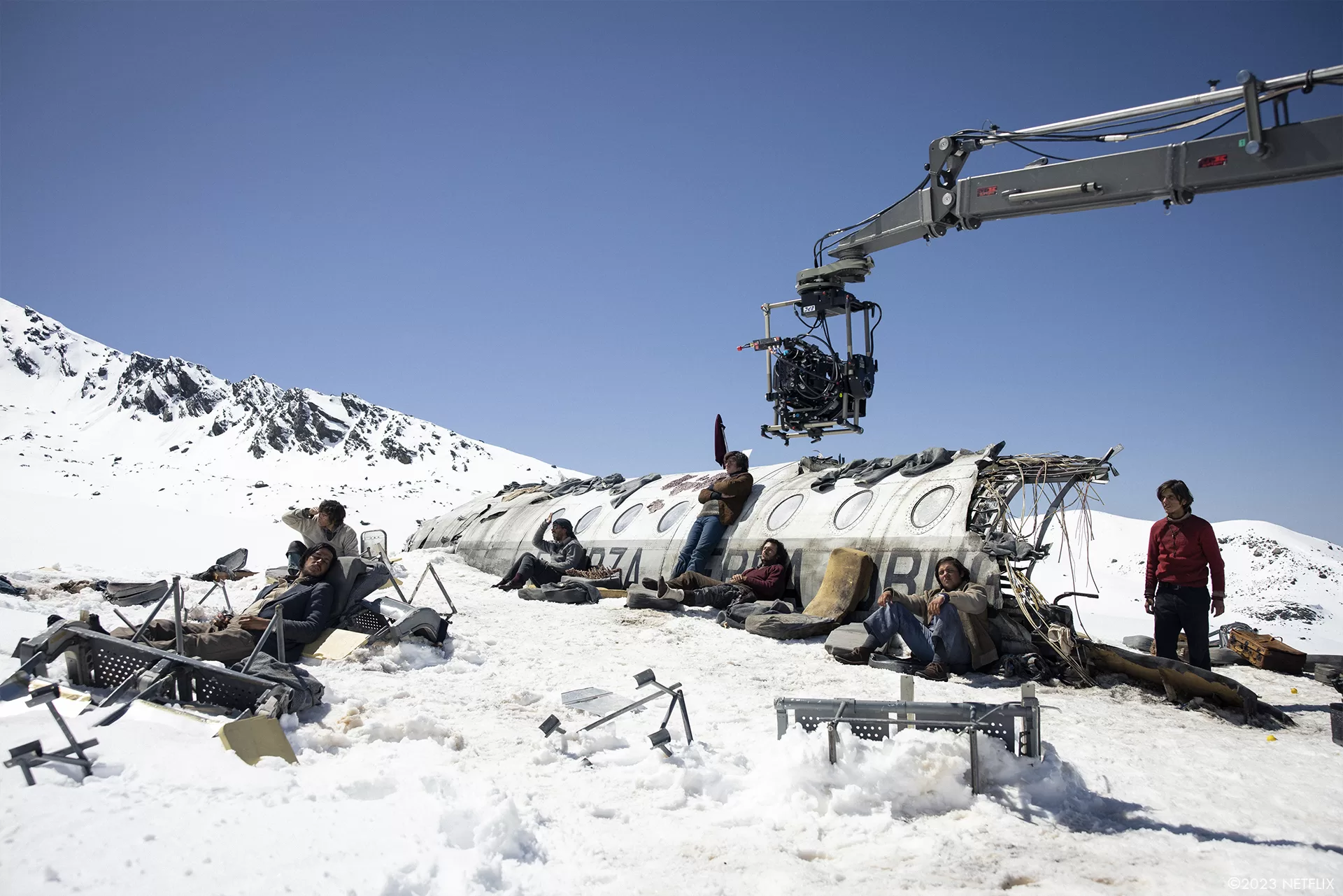
Can you elaborate about the creation of the impressive plane crash?
Laura Pedro // We followed the same approach as in the rest of the film in terms of our intervention, finding a way to film it as real as possible « without dying trying ». That’s why we decided from the beginning to work with Jota and the El Ranchito team on a very specific and detailed preview of each shot we wanted to film and thus decide once the sequence worked for us how to film it.
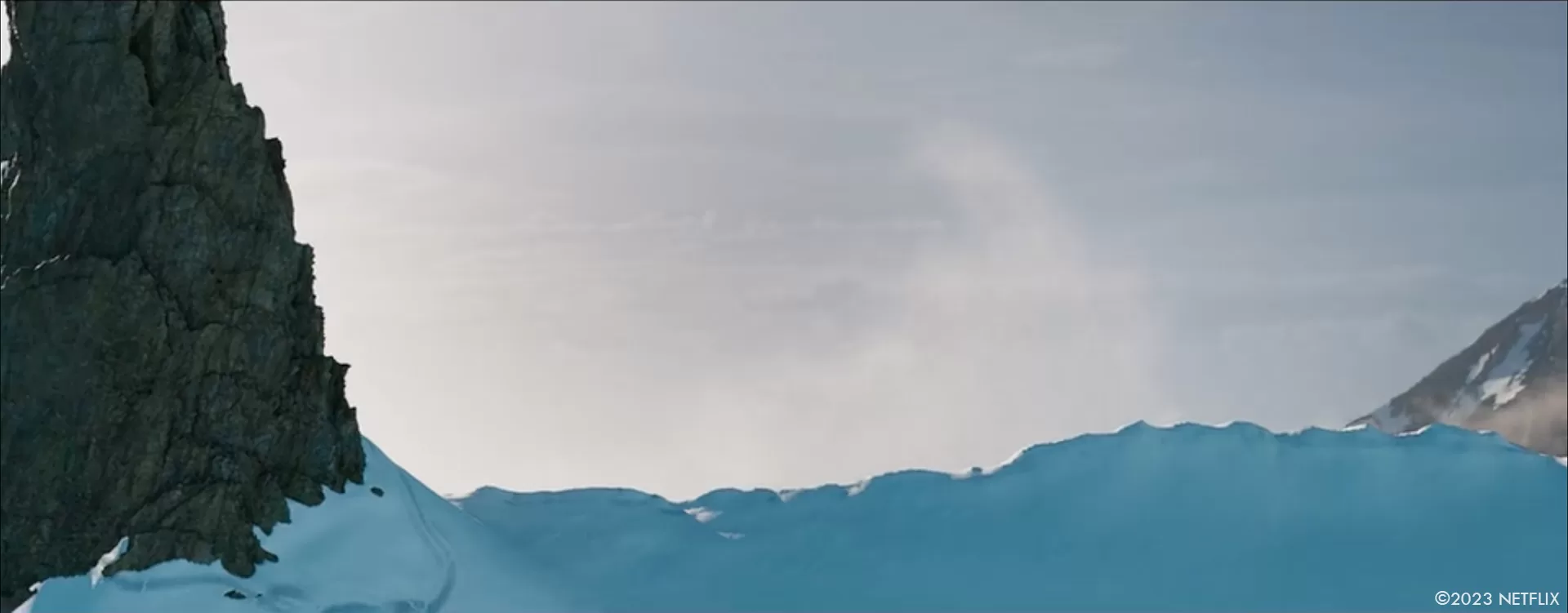
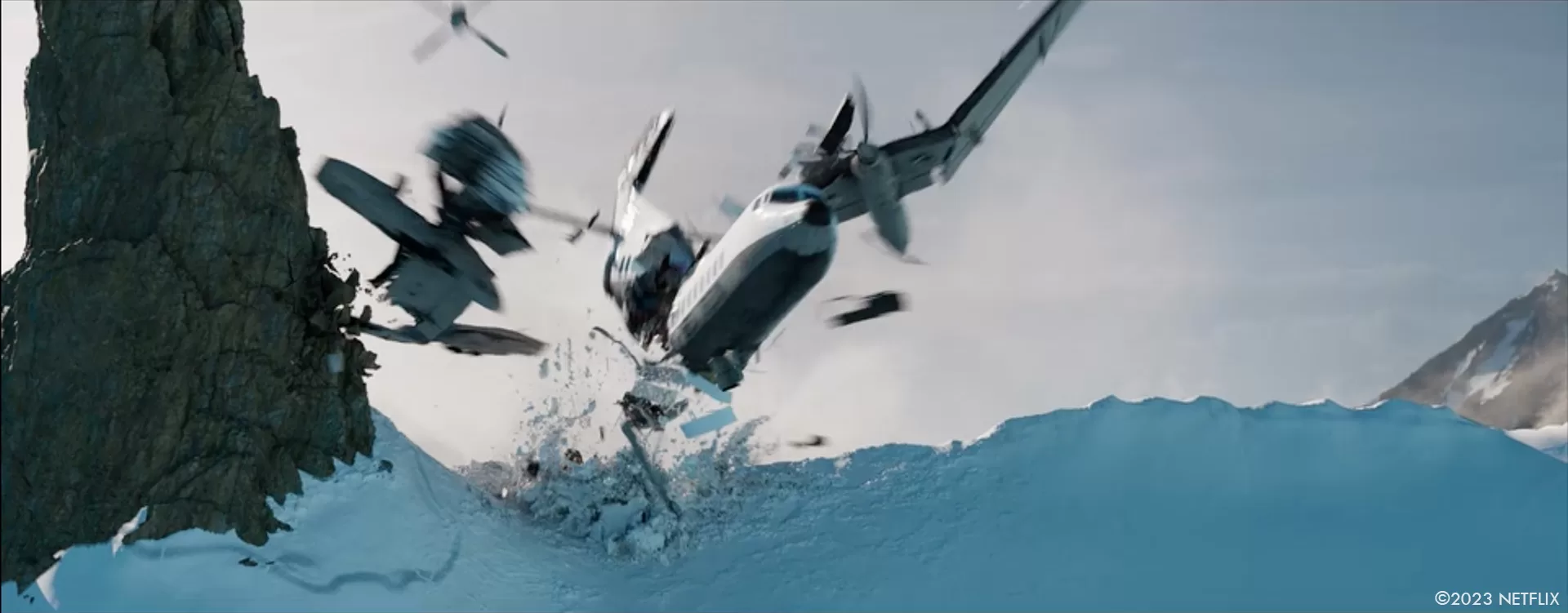
One of the moments that was most difficult for us to define how to film it with real bodies is the moment of the final impact, when all the bodies and seats collapse between them, we knew that we did not want to generate it digitally with digidoubles but we needed to find a way to do it. For this at the beginning we did make 3D simulations with FX to see what that collapse was like. With this we came to the conclusion that the best way without using cables and for a real movement was to use the force of gravity, for this we built a third of the fuselage (aircraft) on top of a gimbal that provided us with an inclination of 25º and allowed the bodies to fall into the chamber with a real force and without taking risks. We shot with real actors and stunts in various layers and then composed them and made the « accordion » effect, getting the effect of collapsing real bodies and physical elements.
Which techniques did you use for the background plates inside the flight?
Everything that you see in the backgrounds of the accident comes from real plates that we filmed in the filming we did in the Andes, all the backgrounds that you see in the windows and when the plane breaks belong to that filming that we did expressly so as not to digitally generate any background. A mix of real images filmed with Alexa from helicopter, photographic and drone material.
For the moment when the fuselage descends down the slope after impact, for example, we filmed with a 360º camera the entire route, we placed the camera on a skier, so we could better understand the dimension and we could portray that moment in the most faithful way.
What was your approach to recreate the massive environments of the Andes Cordillera?
One of the director’s most important goals was that at all times the backgrounds we saw in the film were the real ones of the place where the accident occurred. The mountain range before the crash site and the valley (« Valley of Tears ») in which they spent most of the 72 days is immense. The walls reach almost 4200 meters and the valley is very difficult to access. We made a very exhaustive preparation to define the mountaineers who were going to go to shoot in the valley which is what we needed, we built a program in Unreal with satellite information with which we marked all the necessary photographs to use them later for background and to make a photogrammetric model of great detail. In addition, the director and the cinematographer using our app designed all the necessary plates.
At all times we have used photographic material projected on 3D scenarios to make all the shots of the film except for the accident sequence in which we built a complete CG environment of the wall of the mountain they fell down. Of the four NSEW directions, the valley we shot in in the Sierra Nevada in Granada, we could use the nearby part of the N and W directions quite well (the big wall they came out of) and we had to CG generate close parts for E and S because the shape of the mountain didn’t match enough. The far backgrounds were changed in 100% of the shots of the film (about 800).
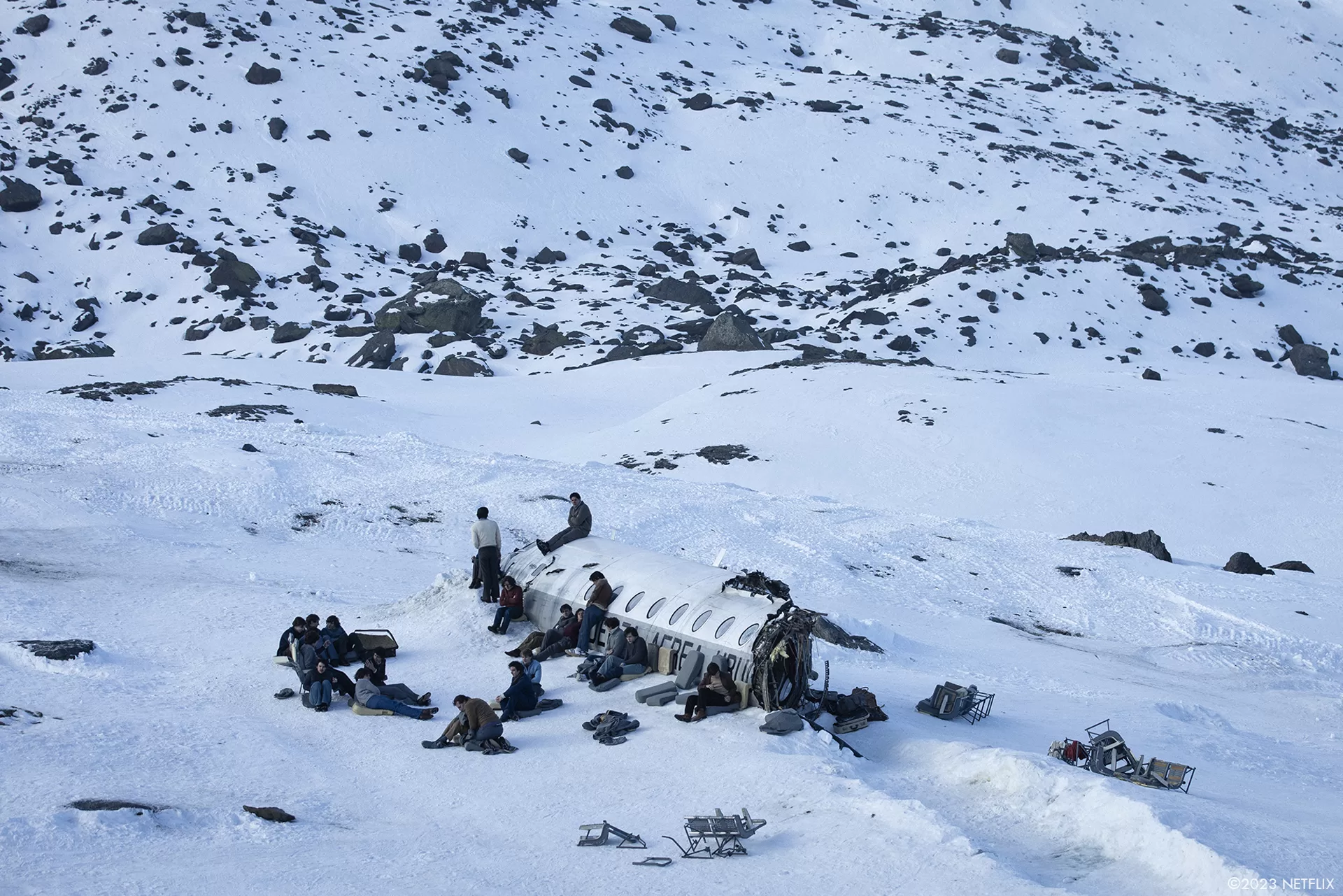
Can you explain in detail about the creation of the Andes Cordillera?
The south wall of the Valley of Tears, which was the place where the fuselage slid until it hit the bottom of the valley, is a 3D environment based on low-detail photogrammetry that we were able to take with photos at ground level and drone, then we added 3D detail. The part of the Andes mountain range prior to the place where they hit the mountain is a 3D environment based on a photogrammetry made with the helicopter’s taxiing material also with an improvement of detail in modeling.
The previous shots in which the plane travels through the Andes are plates filmed in a helicopter in which we have added mountains with a lot of snow in 3D in the foreground. It should be remembered that the year in which the accident occurred, 1972, was a year of heavy snowfall and that due to climate change the Andes today have much less snow in many places. In addition, of course, CG clouds have been added in all planes.
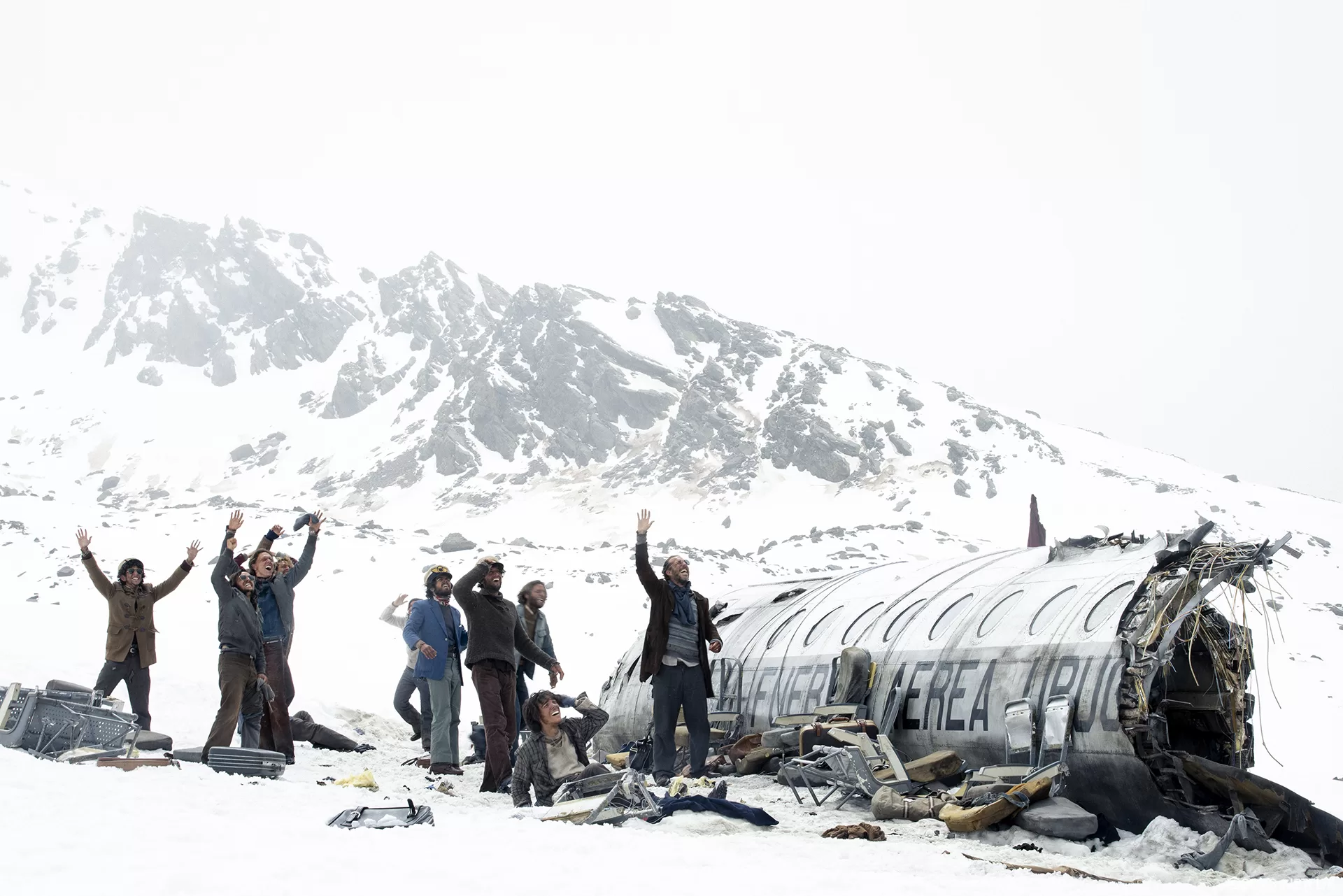
How does the specific sunlight affect your work?
The place where the accident happened is very close to the equator 33 degrees south, it is a very high valley between 2000 and 4000 meters, the type of light is very extreme, the sun is very vertical for a mountain area. We chose the location of Sierra Nevada in Spain because it is one of the closest to the equator (37 N) and has a more similar light and a greater number of hours of sunshine to shoot. In addition, it is very common to have days of very hard and direct sunshine as the survivors had in the Andes. We wanted to make a film based on photography and we had the problem that the light of the Andes, being south and because of the orientation of the valley, was sometimes counting. Of course we continuously changed the time, the backgrounds of the sunrise Andes were for the shots that we shot at sunset in Sierra Nevada but even so the photographs without retouching in many cases did not work, for that we retouched many photographs and did a lot of matte painting work to adapt the backgrounds to the main filming of actors in Sierra Nevada.
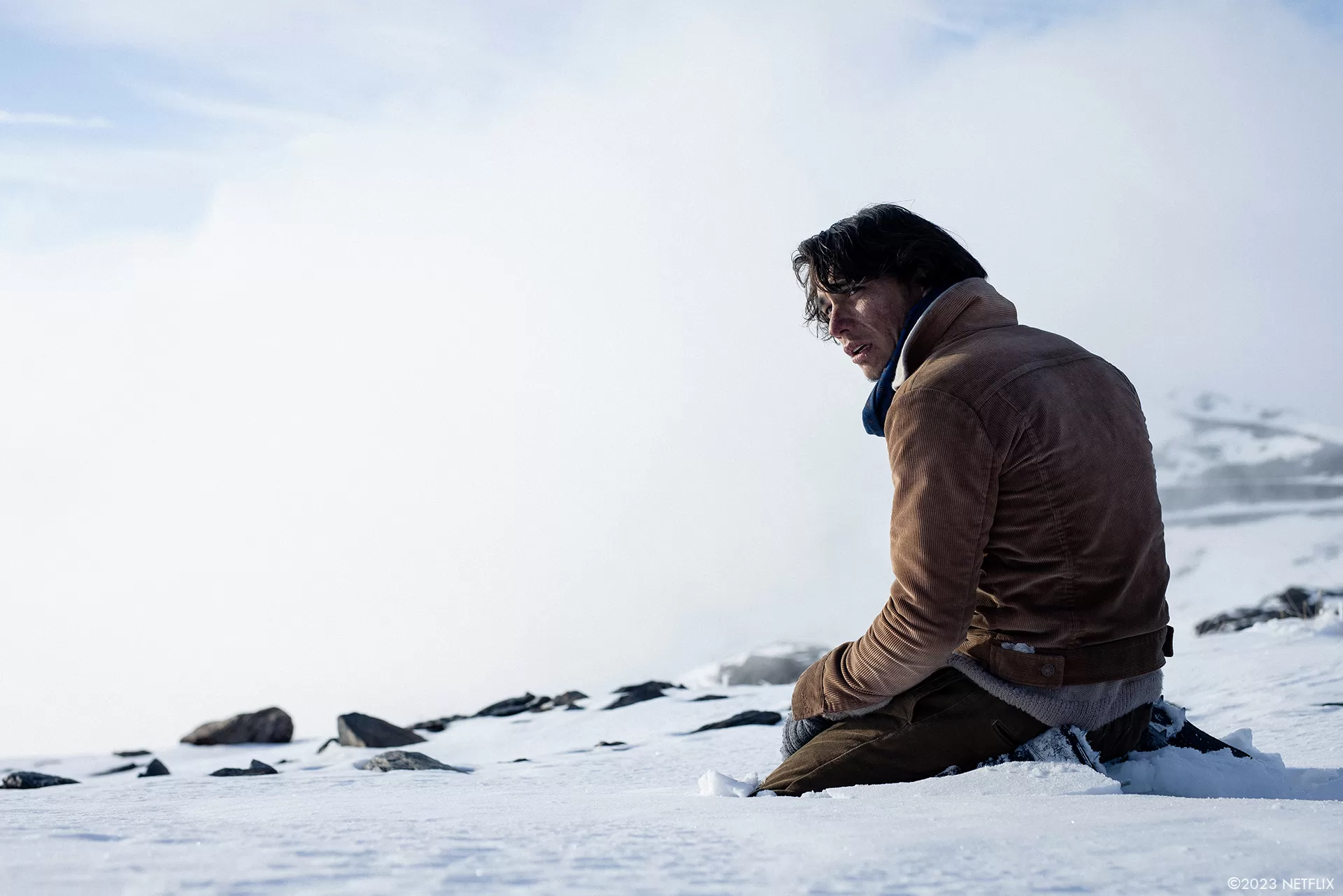
Can you elaborate about the avalanche sequences?
The avalanche sequence has several opening shots where the snow outside is CG and the rest has a real basis with some CG enhancement. The most important job was to help make the filming viable by extending the set and covering the gaps with a CG fuselage to illuminate and move the camera. In addition, in many shots we help by adding dirt to the lens, steam effects, fog, particles, etc.
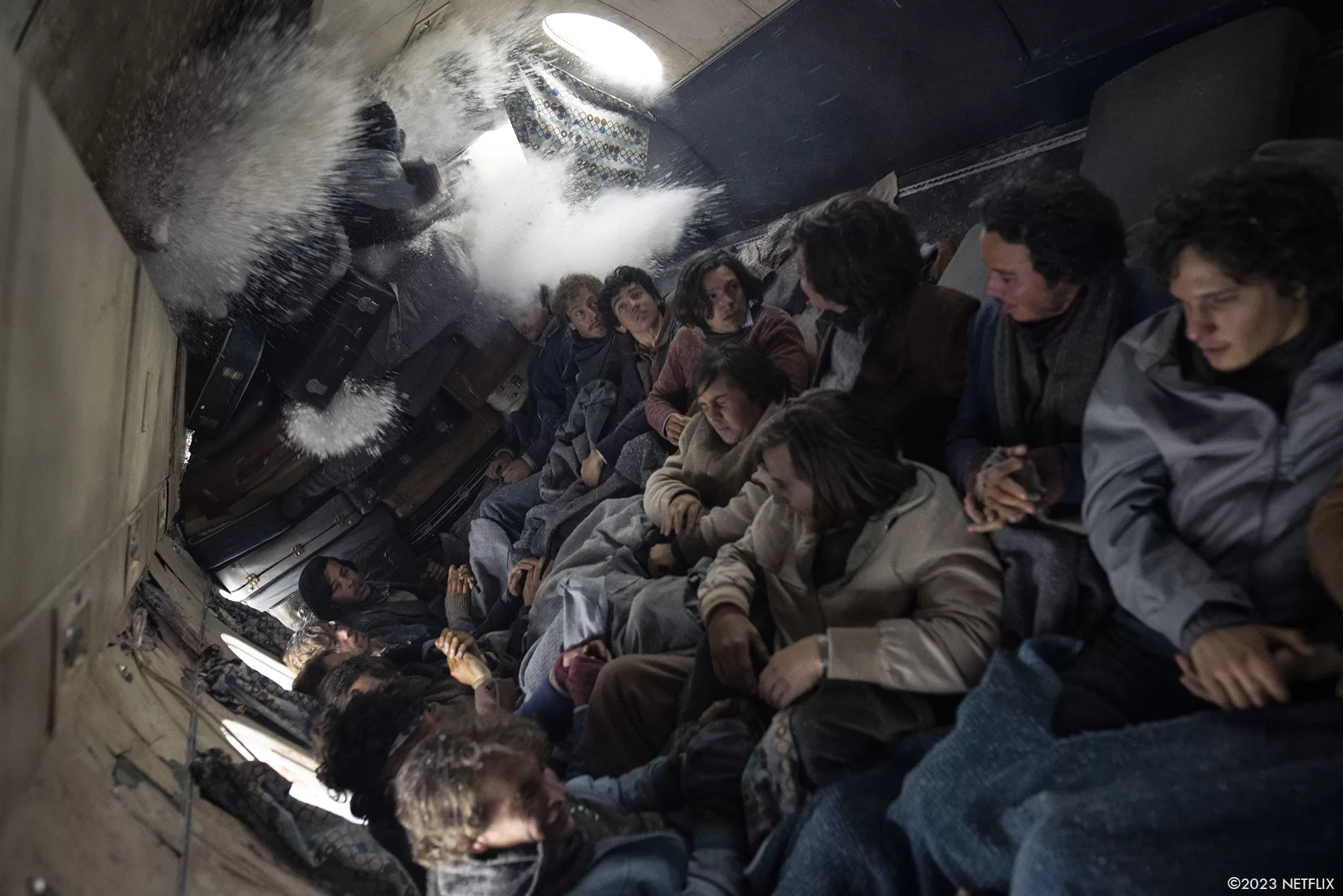
How did you work with the SFX and stunt teams?
By far the most important sequence that the VFX, SFX and stunts teams worked on was the accident. We at VFX always think that the more you can shoot with SFX and stunts is always much more real and more interesting than using CG.
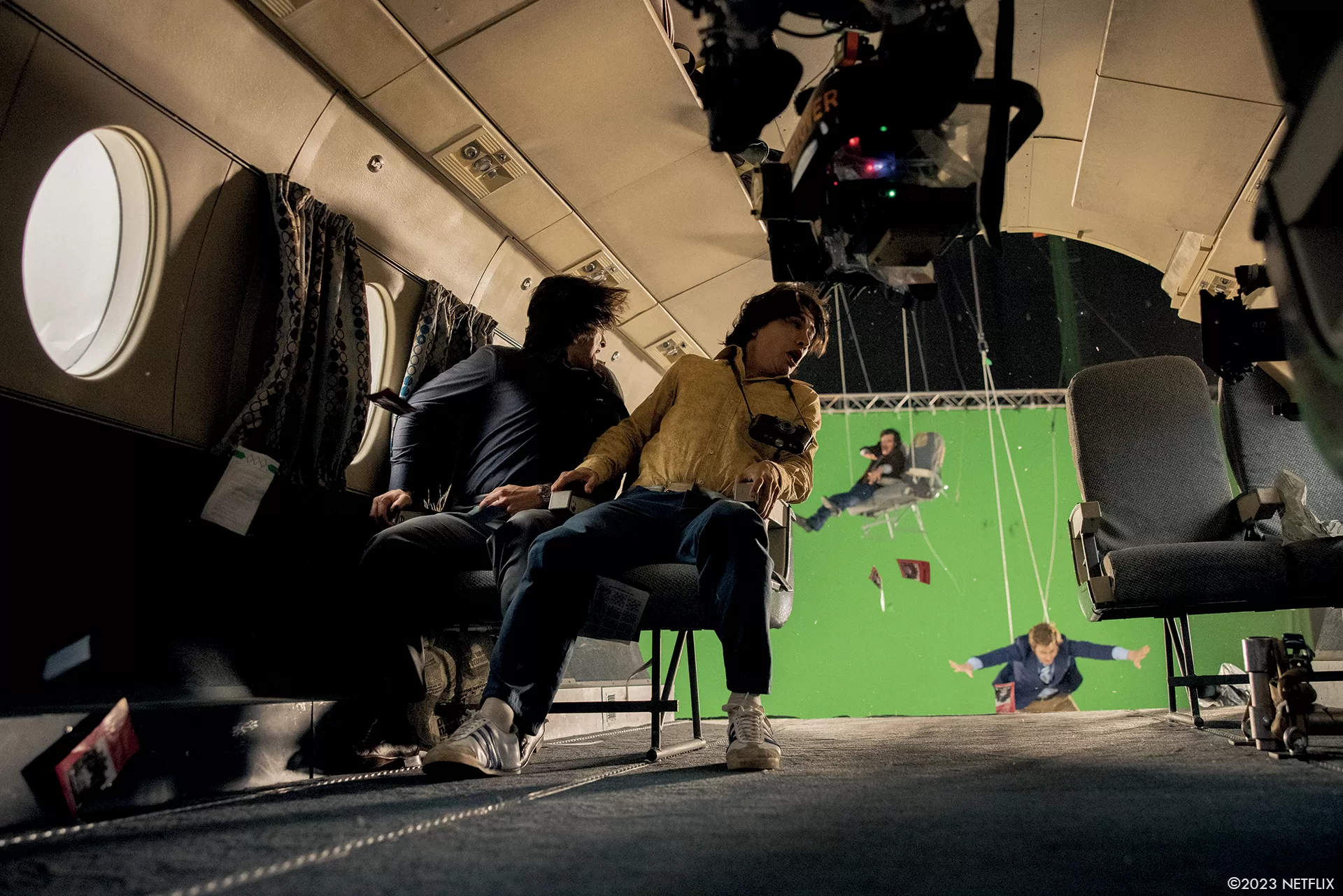
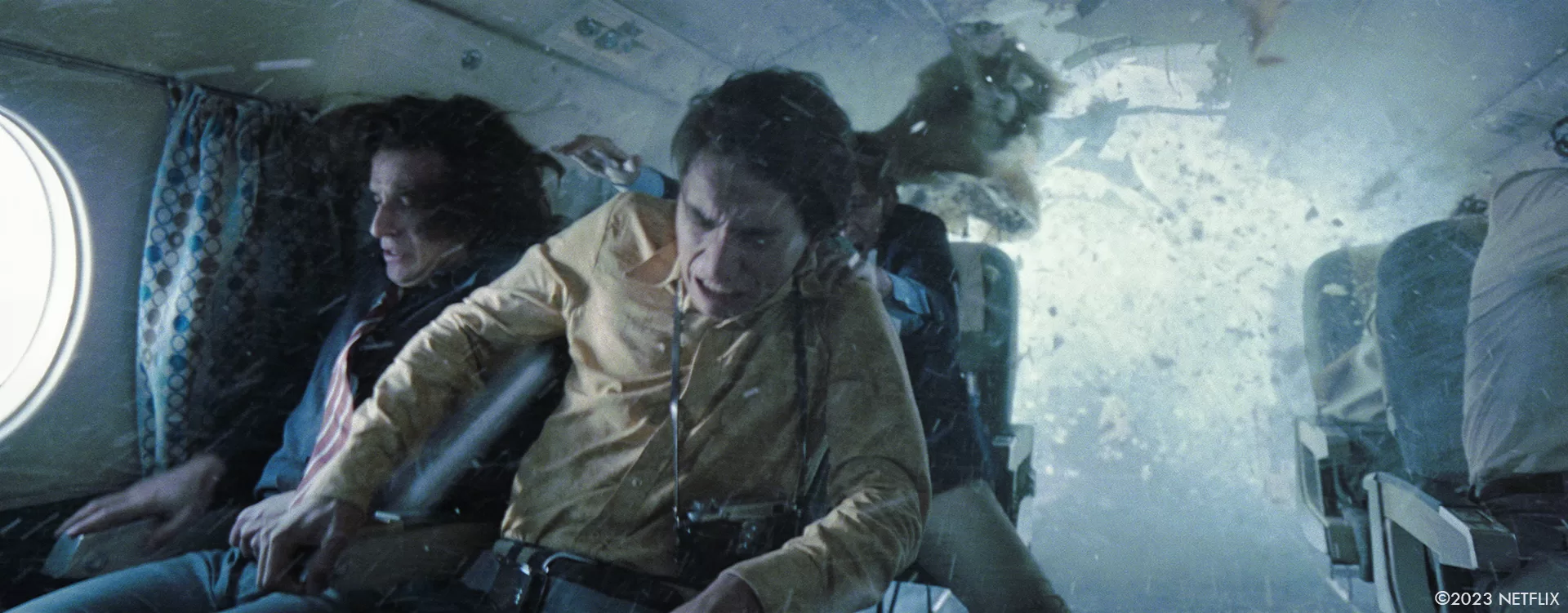
Did you do digital makeup work for the wounded or the cold?
The make-up work is fundamentally real, but we have helped in quite a few shots to make small clean-ups or add some detail that the director asked us to do.
Did you want to reveal to us any other invisible work?
The film has 1,000 shots with VFX that we hope will be invisible enough. For us, the most important thing, and what we are most proud of is that the survivors told us when they saw the film that they had the impression of being there again, they recognized the bottoms, the rocks, the mountains, the cold and the blizzards, that was absolutely the goal.
Which sequence or shot was the most challenging?
The accident for many reasons, because of the difficulty of telling a story from inside an airplane, which often makes the shots very static, because it was the only part of the film in which we did full CG shots and that in a film that is 100% photographic makes you doubt the credibility of each pixel of the image, because we had to simulate a lot of very extreme weather conditions with almost plane-to-shot changes, because it’s the « visible » VFX sequence of the film.
Is there something specific that gives you some really short nights?
Deadlines and the number of drawings to be worked on weekly and checked.
What is your favorite shot or sequence?
Félix Bergés // The very general shots of the valley, it was very nice to see on the big screen those shots with everything white but with detail in the snow, blizzards, to see the feeling of scale.
Laura Pedro // The wide shots when they discover « the tail ».
What is your best memory of this film?
Félix Bergés // Shooting in the VFX unit or in the second unit in the mountains, we have been very lucky to see moments of light and very, very beautiful landscapes.
Laura Pedro // Absolutely, being there and living them while we were filming, also for me something that I will not forget were the two trips to the Andes where I discovered and understood the immensity, that helped us a lot later to understand the sizes when we were filming in Sierra Nevada and during the post-production of the wide shots.
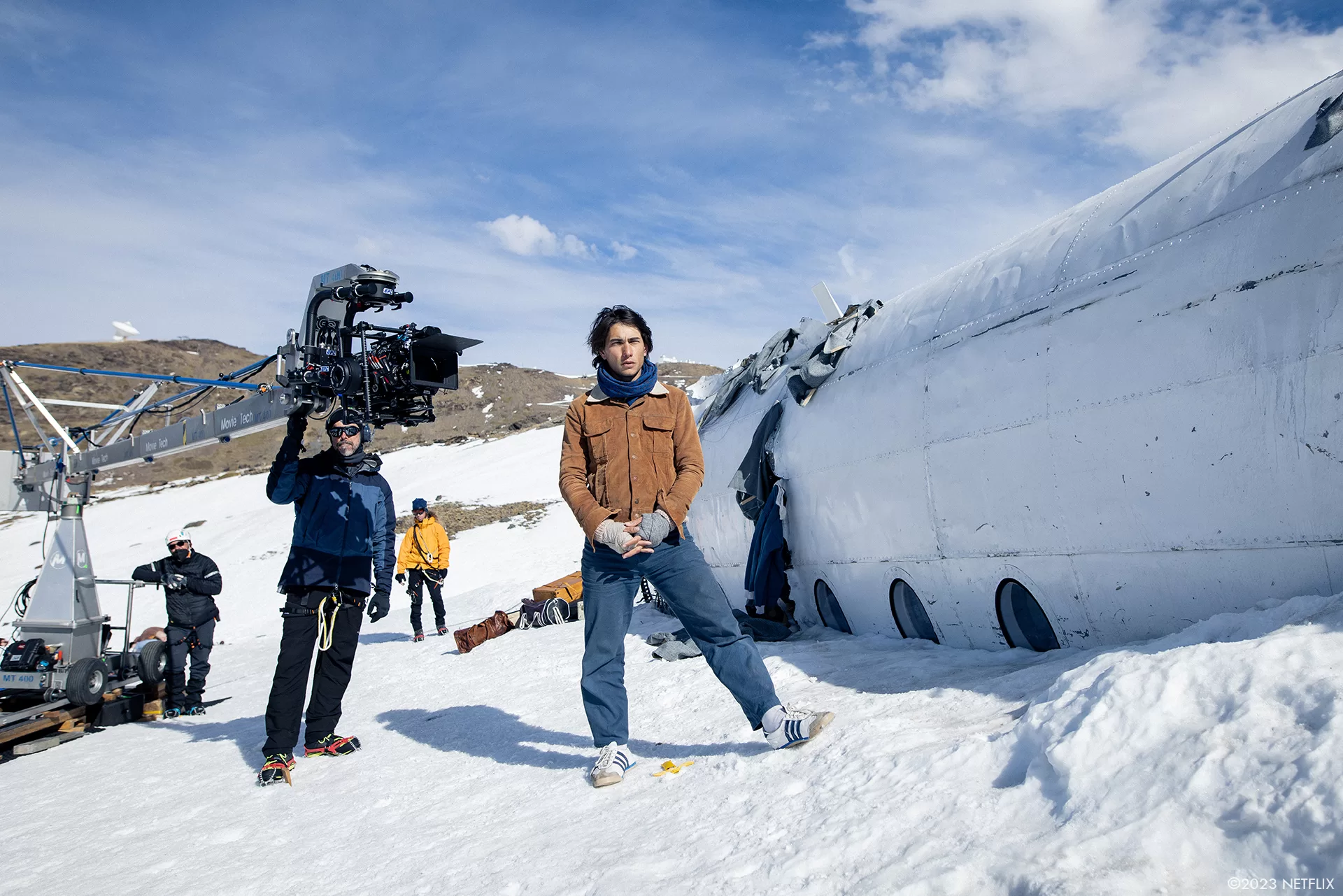
How long have you worked on this film ?
Félix Bergés // Two years in a very intense way but we have been researching locations and many other topics I think 5, I don’t remember anymore.
Laura Pedro // I do seem to remember that the first time we met to talk a little seriously about the project and start putting essential points on the table was around 2018.
What’s the VFX shots count?
Approximately 1000.
What is your next project?
RELAX? We would love a little relaxation, but the truth is that we are already working on the pre-production of new projects that will surely also make us break our heads at some point or another, there is never an easy project.
A big thanks for your time.
// VFX Reel
// Trailer
WANT TO KNOW MORE?
El Ranchito: Dedicated page about Society of the Snow on El Ranchito website.
Netflix: You can stream Society of the Snow on Netflix.
© Vincent Frei – The Art of VFX – 2024






